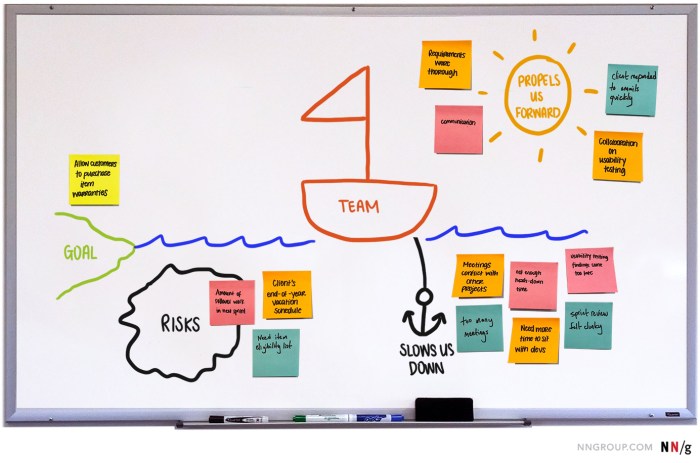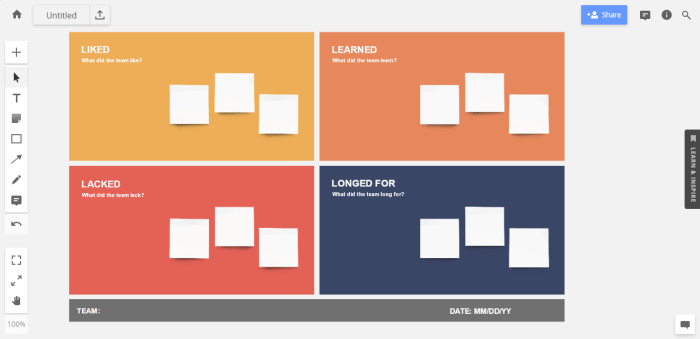According to safe what is one approach to retrospectives – According to Safe: A Comprehensive Approach to Retrospectives unveils a novel and systematic framework for retrospectives, empowering teams to optimize processes, enhance collaboration, and drive continuous improvement. This approach, grounded in the principles of Safety, Agility, Feedback, and Empowerment (SAFE), offers a structured and effective methodology for振り返り sessions.
Delving into the intricacies of retrospectives, this narrative explores their significance in identifying areas for improvement, fostering team learning, and cultivating a culture of innovation. By embracing the According to Safe approach, organizations can unlock the full potential of retrospectives, maximizing their impact on project outcomes and overall organizational success.
Definition and Purpose of Retrospectives

Retrospectives are structured meetings held by teams to reflect on their past performance, identify areas for improvement, and plan for the future. They are an essential part of the Agile development process and can help teams to improve their productivity, quality, and collaboration.
There are different types of retrospectives, each with its own objectives. Some common types include:
- Sprint retrospectives: These are held at the end of each sprint to review the team’s progress and identify areas for improvement.
- Release retrospectives: These are held after a major release to review the overall project and identify lessons learned.
- Team retrospectives: These are held periodically to review the team’s overall performance and identify ways to improve.
According to Safe, Approach to Retrospectives
The “According to Safe” approach to retrospectives is a structured framework for conducting retrospectives. It is based on the principles of Agile development and provides a step-by-step guide for teams to follow.
The key principles of the According to Safe approach include:
- Focus on the future: Retrospectives should be focused on identifying ways to improve the team’s performance in the future, rather than dwelling on past mistakes.
- Involve the whole team: Everyone on the team should participate in retrospectives, regardless of their role.
- Create a safe environment: Retrospectives should be a safe space for team members to share their thoughts and ideas without fear of judgment.
- Use a structured process: The According to Safe approach provides a structured process for conducting retrospectives, which helps to ensure that they are productive and effective.
Benefits of Using the According to Safe Approach
There are many benefits to using the According to Safe approach for retrospectives. These include:
- Improved team collaboration: Retrospectives can help to improve team collaboration by providing a forum for team members to share their thoughts and ideas.
- Improved decision-making: Retrospectives can help teams to make better decisions by providing them with a structured process for reviewing their past performance and identifying areas for improvement.
- Drive continuous improvement: Retrospectives can help teams to drive continuous improvement by providing them with a way to identify and address areas for improvement.
Best Practices for Implementing the According to Safe Approach

There are a number of best practices that teams can follow to implement the According to Safe approach effectively. These include:
- Prepare for retrospectives: Teams should prepare for retrospectives by gathering data on their past performance and identifying areas for improvement.
- Facilitate retrospectives: Retrospectives should be facilitated by a neutral party who is not directly involved in the team’s work.
- Encourage participation: Teams should encourage all team members to participate in retrospectives and share their thoughts and ideas.
- Document outcomes: Teams should document the outcomes of retrospectives so that they can be reviewed and acted upon in the future.
Tools and Resources for According to Safe Retrospectives

There are a number of tools and resources available to support the According to Safe approach for retrospectives. These include:
- Templates: There are a number of templates available online that can help teams to plan and conduct retrospectives.
- Checklists: There are a number of checklists available online that can help teams to ensure that they are following the According to Safe approach.
- Online platforms: There are a number of online platforms available that can help teams to conduct retrospectives remotely.
Case Studies and Examples of Successful Implementations
There are a number of case studies and examples of organizations that have successfully implemented the According to Safe approach for retrospectives. These include:
- Google: Google has used the According to Safe approach to retrospectives to improve its software development process.
- Spotify: Spotify has used the According to Safe approach to retrospectives to improve its team collaboration.
- Amazon: Amazon has used the According to Safe approach to retrospectives to improve its customer service.
FAQ Section: According To Safe What Is One Approach To Retrospectives
What is the primary objective of retrospectives?
Retrospectives aim to critically examine past processes or projects to identify areas for improvement, foster team learning, and promote continuous improvement.
How does the According to Safe approach differ from traditional retrospective methods?
The According to Safe approach emphasizes the principles of Safety, Agility, Feedback, and Empowerment, providing a structured and comprehensive framework for conducting retrospectives.
What are the key benefits of using the According to Safe approach?
The According to Safe approach enhances team collaboration, improves decision-making, promotes transparency, and drives continuous improvement.